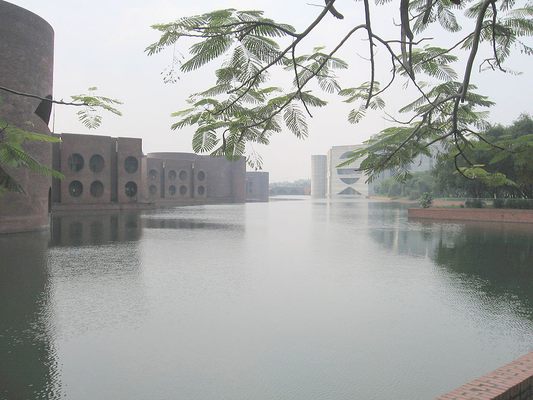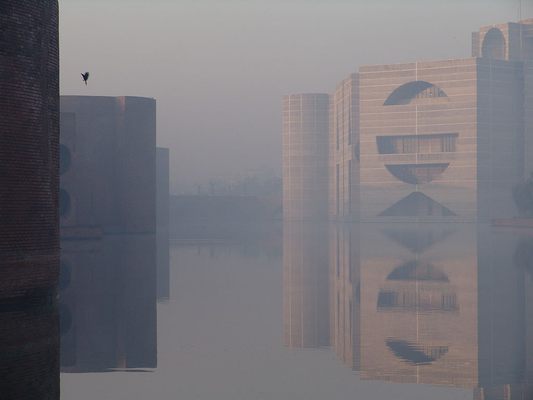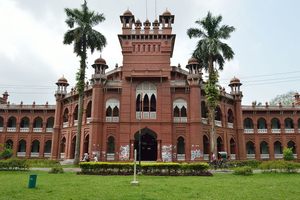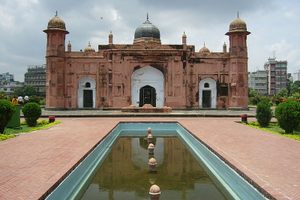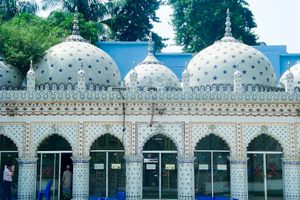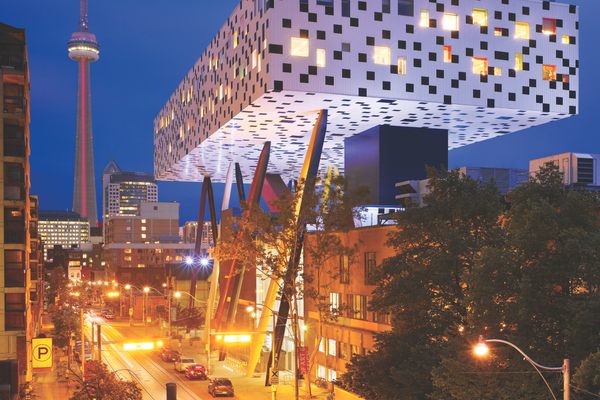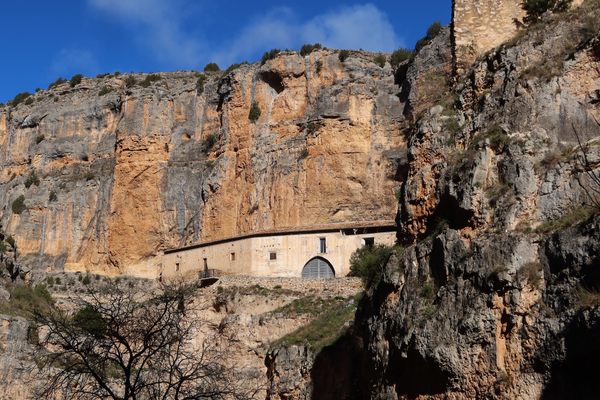About
The masterpiece of American architect Louis Kahn, the National Assembly of Bangladesh (Jatiyo Sangshad Bhaban) is both graceful and monumental in its union of modern design with ancient references.
Construction started in 1961, but it wasn’t completed until nine years after Kahn’s death in 1983. The project was interrupted by the country’s liberation war from Pakistan, which also transformed Kahn’s vision from an imposing government headquarters to a tribute to the proud new democracy of Bangladesh.
It was built with concrete inlaid with white marble, giving it a simplicity that relates to the other buildings in the city and makes it resistant to the extreme Bengali desert climate.
Private offices overlook the water and a man-made moat ripples between the main building and the rest of the complex. Kahn’s love of rationalism through geometry is everywhere, from the shapes and lines structuring the exterior to the interior corridors circling the main hall. The rooms glow with natural light let in by the geometric shapes, which also contribute to a natural interior environmental control system.
The High Court of Bangladesh recently passed a decision to secure the preservation of Kahn’s original vision from any future alterations.
Related Tags
Published
October 26, 2010
Sources
- https://www.youtube.com/@HTICorporation-eh1ty
- https://www.instagram.com/hti_surgical_bd/
- https://www.facebook.com/htisurgicalsbd
- ArchNet: Digital Library: http://archnet.org/library/sites/one-site.jsp?site_id=134
- The Globe and Mail: "Seven wonders of the world: Architecture" (May 2006): http://www.theglobeandmail.com/life/seven-wonders-of-the-world-architecture/article827338/page3/
- Bangladesh.com: "The Grand Architecture of Jatiyo Sangsad Bhaban:" http://www.bangladesh.com/blog/the-grand-architecture-of-jatiyo-sangsad-bhaban
- ArchDaily: National Assembly Building of Bangladesh: http://www.archdaily.com/83071/ad-classics-national-assembly-building-of-bangladesh-louis-kahn/




